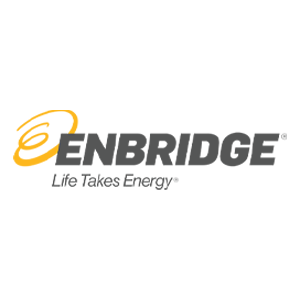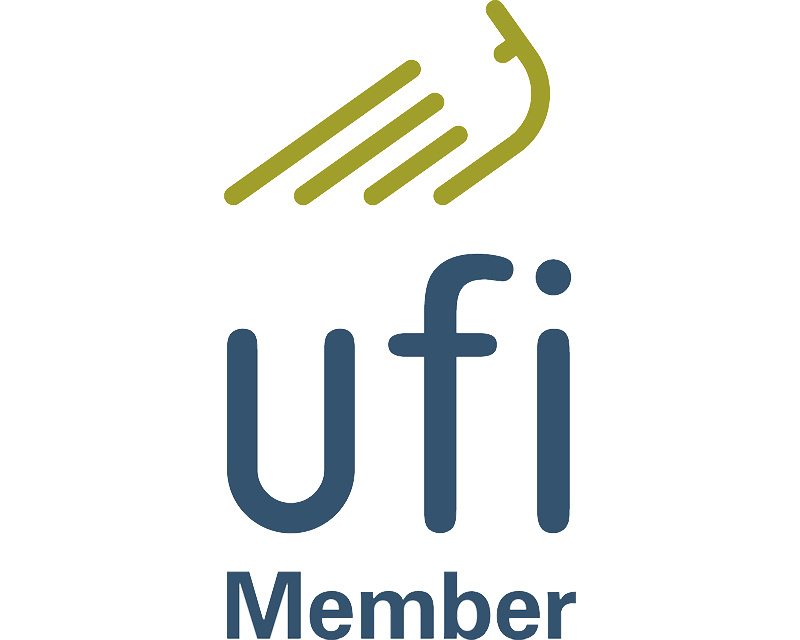- 10 30 AM
Carbon Sequestration: The Pathway to Commerciality
Western Canada is already a world leader in CCUS due to our technical expertise, geological suitability, and legal, regulatory, and policy frameworks, which have enabled the safe and successful ope...
Knowledge Partner : Enbridge
 Exhibition Floor
Exhibition Floor 10:30 AM - 11:15 AM
10:30 AM - 11:15 AM
Carbon Sequestration: The Pathway to Commerciality
 10:30 AM - 11:15 AM
10:30 AM - 11:15 AM Exhibition Floor
Exhibition Floor
Western Canada is already a world leader in CCUS due to our technical expertise, geological suitability, and legal, regulatory, and policy frameworks, which have enabled the safe and successful operation of numerous projects to date. Strengthened climate goals, increased investment incentives, and public perceptions have led to a dramatic increase in momentum for CCUS in Canada over the recent past that will further establish our place as a global leader. Technology will play an increasingly important role in Canada's net-zero 2050 ambitions and will deliver emission reduction solutions for a range of hard-to abate industries. Furthermore, as the carbon sequestration industry matures, barriers to entry for novel applications will likely be lowered and present new opportunities for Alberta and Western Canada. The purpose of this presentation is to establish where CCUS is today to then inform what the CCUS landscape might look like as a global leader into the future.
- 11 30 AM
Carbon Capture Utilization and Storage
Carbon capture, utilization and storage (CCUS) is gaining momentum as a decarbonization solution. With years of research and development and several successful implementations, combined with recent...
Knowledge Partner : Enbridge
 Exhibition Floor
Exhibition Floor 11:30 AM - 12:15 PM
11:30 AM - 12:15 PM
Carbon Capture Utilization and Storage
 11:30 AM - 12:15 PM
11:30 AM - 12:15 PM Exhibition Floor
Exhibition Floor
Carbon capture, utilization and storage (CCUS) is gaining momentum as a decarbonization solution. With years of research and development and several successful implementations, combined with recently approved prices on carbon, the market is positioned to grow rapidly. This presentation will recap the technical, economic and social drivers that have propelled the North American market to this stage. We will consider competing decarbonization methods, including CCUS, and their roles in decarbonization efforts in the future. Early adoption market constraints will be examined, as well as long-term opportunities and how the CCUS market is anticipated to grow.
Some estimates indicate the CCUS market will grow to be a trillion-dollar global market annually. This growth would require collaboration between numerous technology OEM’s and EPCs to meet this projected demand. Kiewit is situated to support project developers, end-users and technology providers, and ready to engineer, procure, construct and commission these CCUS projects throughout North America.
In this presentation, I will focus on engineering processes from carbon capture projects initial concept phases to the final investment decision, technology and commercial readiness required for a mature industry, and regions that will likely be early adopters. I will share Kiewit’s criteria for a successful project and why we believe developing strong relationships improve results. Additionally, I will discuss commercial issues such as contract models, risk allocation and intellectual property. Finally, I will share how Kiewit has prepared for more engineering FEED studies and multiple EPC projects across North America with a variety of technologies.
- 12 30 PM
Advancing Worm Holing and Improving Injectivity in Carbon Sequestration Wells in North America Utilizing HCR-6000® Modified Acid™
HCR-6000® Modified Acid™ is a patented acid system that optimizes proton donation of hydrochloric acid to aid in efficient reservoir stimulation at low injection rates and volumes. The controlled d...
Knowledge Partner : Enbridge
 Exhibition Floor
Exhibition Floor 12:30 PM - 1:15 PM
12:30 PM - 1:15 PM
Advancing Worm Holing and Improving Injectivity in Carbon Sequestration Wells in North America Utilizing HCR-6000® Modified Acid™
 12:30 PM - 1:15 PM
12:30 PM - 1:15 PM Exhibition Floor
Exhibition Floor
HCR-6000® Modified Acid™ is a patented acid system that optimizes proton donation of hydrochloric acid to aid in efficient reservoir stimulation at low injection rates and volumes. The controlled dissociation of HCR allows for improved reservoir penetration and worm holing compared to traditional chemistries to increase the volume of pore space created to store carbon dioxide in underground geologic formations. Additionally, HCR offers a strong health, safety and environmental profile because it is non-corrosive to dermal tissue, biodegradable and low-fuming with ultra-low corrosion rate on common alloys.
- 1 30 PM
CCS Infrastructure Development
This presentation captures key aspects of the material design for construction of CO2 transport pipelines and to make these available to project developers, decision makers and regulators working o...
Knowledge Partner : Enbridge
 Exhibition Floor
Exhibition Floor 1:30 PM - 2:15 PM
1:30 PM - 2:15 PM
CCS Infrastructure Development
 1:30 PM - 2:15 PM
1:30 PM - 2:15 PM Exhibition Floor
Exhibition Floor
This presentation captures key aspects of the material design for construction of CO2 transport pipelines and to make these available to project developers, decision makers and regulators working on CO2 transport projects. Pipe networks that collect CO2 from multiple emitters maximize economies of scale and reduce transport costs while offering better feasibility for capture retrofit for industrial facilities. To build CCUS hubs successfully we must mitigate risks of CO2 transport through careful design and material selection. By participating in several CO2 transport projects globally, we learned that currently CO2 hubs have no specific set of rules. Each hub has its own ad hoc standards for CO2 quality, acceptable impurities, pressure, and temperature. CO2 pipeline projects come in a wide variety with no blueprint for their design. To transport large amounts of CO2 efficiently, CO2 is compressed to around 100 bar and transformed to dense phase. Currently the regulations and standards used for CO2 pipelines originate in natural gas pipeline codes. Hazards, risks, and design practices for natural gas presently serve as a compass in CO2 risk assessment. It is true that the closet experience for dense phase CO2 transport is natural gas. However, there are stark differences between the two fluids. These differences are mainly due to the thermophysical properties of dense phase CO2. For instance, CO2 forms acid solution in aqueous phase causing corrosion and pipe cracks. To curb these adversities, the operator must keep the water at bay based on what is technically and economically practicable. However, the risk of residual water through the start-up phase and formation of water through transient operations (caused by CO2 phase change) must be carefully considered in the design. In presence of NOx, SOx and O2 typical to industrial CO2 and incidental formation of water in pipelines, CO2 pipelines can experience PH levels below 3 and stress corrosion cracking starts in matter of hours or days. Pipe cracks may the lead to severely low temperatures. The metals exposed to low temperature will experience embrittlement. Corrosion of the pipeline steel (usually carbon steel due to economic reasons) is a serious concern related to leakage and needs to be addressed during the entire project. The risk of stress corrosion cracking cannot be left unmitigated. Mitigation is only possible through appropriate material choice, deep dehydration of CO2 streams and close monitoring of the pipeline. Severely low PH conditions where there is risk of stress corrosion cracking in CO2 pipelines requires deeper understanding and representative experimental data. Currently there is a knowledge gap in this domain. This work presents Vallourec’s R&D program and experimental work to facilitate understanding of failure mechanisms in CO2 pipelines due to stress corrosion cracking and guidelines how to mitigate them.
- 2 30 PM
Key Elements of the CCS Project Evaluation Process
GLJ has been evaluating numerous CCS developments with our clients as they develop their strategic decarbonization plans and respond to new CCS policy and regulatory framework. This presentation wi...
Knowledge Partner : Enbridge
 Exhibition Floor
Exhibition Floor 2:30 PM - 3:15 PM
2:30 PM - 3:15 PM
Key Elements of the CCS Project Evaluation Process
 2:30 PM - 3:15 PM
2:30 PM - 3:15 PM Exhibition Floor
Exhibition Floor
GLJ has been evaluating numerous CCS developments with our clients as they develop their strategic decarbonization plans and respond to new CCS policy and regulatory framework. This presentation will first outline the step-by-step evaluation process, which includes the following: 1) Subsurface Screening and Candidate Identification 2) Reservoir Evaluation and Acquisition Plan 3) Reservoir Sequestration Simulation 4) Field Development and Monitoring, Measurement and Verification (MMV) Planning 5) Economic Modelling and Risking Once the comprehensive evaluation has been conducted and final investment decision (FID) has been reached, there is a continued need for updates to the above evaluation processes through the project development phases and during operations. Following the overview of the evaluation process, we will present our recent findings about a real field case study using CCS reservoir simulation and economic modelling and risking analysis. Reservoir simulation, also incorporated in the MMV plan, is required to be updated periodically to illustrate a safe and predictable sequestration performance at all CCS project stages from pre-injection to closure. Economic modelling and risking analysis are the critical elements for making FID. Our reservoir simulation and economic models were built using publicly available data from an existing CCS facility in Alberta. A 3-dimensional (3D) exocellular model was initially created of the Basal Cambrian sandstone (BCS) for our dynamic reservoir simulation model. It was tuned with an extensive history match performed to ensure main CO2 trapping mechanisms are captured and key properties that affect storage capacity were identified. Forecast cases are therefore conducted to evaluate short-term and long-term effects on plume migration and CO2 trapping. Sensitivity runs were performed to quantify their effects on injectivity, total storage and plume migration. The simulation model is set at the ongoing mode with the incorporation of more future field data and sensitivity studies. In this real-life example, our economic model will show the net present value (NPV) probability distribution, e.g., P10, P50, and P90, demonstrating a reasonable range of CO2 sequestration service fees. The economically attractive scenarios can be determined using the probabilistic model of the associated cost inputs. In summary, this knowledge bar session will give a guideline on how a representative CCS project is evaluated from both technical and economic aspects. The audience will be able to understand how an important FID is made on a representative large-scale CCS project.
- 3 15 PM
- 4 00 PM
Industry Networking Reception
 4:00 PM - 6:00 PM
4:00 PM - 6:00 PM Exhibition Floor
Exhibition Floor
- 10 30 AM
Collaborating on a Full-scale CCUS Solution for the Cement Industry
In January 2022, Lehigh Cement, a division of Lehigh Hanson Materials Limited (Lehigh) and Enbridge Inc. (Enbridge) announced a collaboration to advance a carbon solution for Lehigh's cement manufa...
Knowledge Partner : Enbridge
 Exhibition Floor
Exhibition Floor 10:30 AM - 11:15 AM
10:30 AM - 11:15 AM
Collaborating on a Full-scale CCUS Solution for the Cement Industry
 10:30 AM - 11:15 AM
10:30 AM - 11:15 AM Exhibition Floor
Exhibition Floor
In January 2022, Lehigh Cement, a division of Lehigh Hanson Materials Limited (Lehigh) and Enbridge Inc. (Enbridge) announced a collaboration to advance a carbon solution for Lehigh's cement manufacturing facility in Edmonton, Alberta. Corwyn Bruce, a Senior Project Manager at Lehigh, and Adam Chalkley, Director, Low Carbon Development at Enbridge, are pleased to present an update on Lehigh’s CCUS project in Edmonton and its tie to the Open Access Wabamun Carbon Hub being developed by Enbridge. Lehigh is developing North America's first full-scale carbon solution for the cement industry at its Edmonton plant, with the goal of capturing approximately 780,000 tonnes of carbon dioxide (CO2) annually. Captured emissions would be transported via pipeline and permanently sequestered by Enbridge. Subject to regulatory approvals, the project could be in service as early as 2026. Enbridge and local Indigenous partners are developing the Open Access Wabamun Carbon Hub to support near-term carbon capture projects being advanced by project partners Lehigh, as well as Capital Power Corporation (Capital Power). The Hub and associated carbon capture projects being advanced by Lehigh and Capital Power together represent an opportunity to avoid nearly 4 million tonnes of atmospheric CO2 emissions with phased in-service dates starting as early as 2026. Once built, the Hub will be among the largest integrated CCS projects in the world and can be scaled to meet the needs of other nearby industrial emitters. The Hub's carbon transportation and sequestration facilities will be co-developed and ultimately co-owned with local Indigenous partners, including the First Nations Capital Investment Partnership (comprised of Alexander First Nation, Alexis Nakota Sioux Nation, Enoch Cree Nation and Paul First Nation) and the Lac Ste. Anne Métis Community.
- 11 30 AM
Data-driven Solution to Accelerate Early-stage CO2 Sequestration Project Screening
Early-stage saline aquifer CO2 sequestration project de-risking and development can be time-consuming, costly, and filled with uncertainty. Industry-standard saline aquifer suitability screening ch...
Knowledge Partner : Enbridge
 Exhibition Floor
Exhibition Floor 11:30 AM - 12:15 PM
11:30 AM - 12:15 PM
Data-driven Solution to Accelerate Early-stage CO2 Sequestration Project Screening
 11:30 AM - 12:15 PM
11:30 AM - 12:15 PM Exhibition Floor
Exhibition Floor
Early-stage saline aquifer CO2 sequestration project de-risking and development can be time-consuming, costly, and filled with uncertainty. Industry-standard saline aquifer suitability screening checklists provide limited insight into sequestration opportunity high-grading and development planning. Alternatively, early-stage CO2 sequestration project development often does not require detailed full-field geological and numerical simulation modelling and can be prohibitively expensive for those at the initial project scoping stage. Sproule’s Carbon Management and Data Science teams have developed a data-driven Machine Learning CO2 sequestration tool to assist in early-stage CO2 sequestration project scoping. The tool can predict critical parameters for project decision-making using geology-based variables as inputs and calculating carbon sequestration KPI's (response variables) based on a dataset of over 200 numerical simulation sensitivity runs. The model applies a Bayesian Regression Machine Learning algorithm to model and predict probability distributions of response variables returning a P10, P50, P90 range in Cumulative CO2 injected, Number of Injection Wells, Maximum, Average and Final Injection Rates, and CO2 Plume Diameter response variables. Sproule has tested the tool on a comprehensive geomodel (Petrel) constructed for the Basal Cambrian Sandstone aquifer for Southern Alberta. This solution can help provide a basis for economic modelling and accelerate understanding of future saline aquifer development plans and the impact of key uncertainties.
- 12 30 PM
What about Electric Compression? – Exploring an Integrated Solution
Gas compression has many applications and plays a large role in our energy industry, especially in Carbon Capture Utilization and Sequestration (CCUS). While compression units have primarily been e...
Knowledge Partner : Enbridge
 Exhibition Floor
Exhibition Floor 12:30 PM - 1:15 PM
12:30 PM - 1:15 PM
What about Electric Compression? – Exploring an Integrated Solution
 12:30 PM - 1:15 PM
12:30 PM - 1:15 PM Exhibition Floor
Exhibition Floor
Gas compression has many applications and plays a large role in our energy industry, especially in Carbon Capture Utilization and Sequestration (CCUS). While compression units have primarily been engine driven, the rising use of electric motors and variable frequency drives paired with tighter emissions targets presents benefits in the electric compression space that customers can capitalize on. This session will discuss at a high level, compression control using electric drivers, reducing costs in this space, and the impact of having an integrated electric compression solution on performance, operations, and maintenance.
- 1 30 PM
Integrity Considerations for Dehydration of Carbon Dioxide
Carbon capture, sequestration, and utilisation is widely considered to be one of the key enablers to decarbonising the economy. Transportation of carbon dioxide (CO2) is a key focus area in carbon...
Knowledge Partner : Enbridge
 Exhibition Floor
Exhibition Floor 1:30 PM - 2:15 PM
1:30 PM - 2:15 PM
Integrity Considerations for Dehydration of Carbon Dioxide
 1:30 PM - 2:15 PM
1:30 PM - 2:15 PM Exhibition Floor
Exhibition Floor
Carbon capture, sequestration, and utilisation is widely considered to be one of the key enablers to decarbonising the economy. Transportation of carbon dioxide (CO2) is a key focus area in carbon capture projects, especially those involving sequestration. While dehydration of natural gas for transportation is well understood and regulated, the same cannot be said for CO2. This is due to its immaturity of implementation relative to natural gas and due to properties of CO2 being radically different to those of hydrocarbons. One of those physical properties is the ability of CO2 to saturate with water. Excessive water in CO2 transportation and injection systems can cause integrity and operability problems such as corrosion, blockages from hydrates and water ice, and slugging due to liquid water dropout. Contaminants present in the CO2 stream such as methanol and hydrogen can also have a significant impact on the fluid’s phase envelope. Therefore, to mitigate these issues, dehydration specifications need to be selected based on phase envelopes and other important project parameters such as corrosion, ambient temperatures, and hydrate formation. For individual projects, selection needs to be made to determine the applicable CO2 dehydration specification, considering both normal and transient operating conditions. Based on the project’s specification, the most suitable dehydration method should be selected along with the optimum location of the dehydration equipment in the multi-stage pressure-boosting plant. This study explores these challenges and presents a methodology for overcoming potential issues.
- 2 30 PM
Integrated Modularized CO2 Liquefaction Facilities for Low Carbon Economy
Reduction of carbon emissions through capture and sequestration has become a critical component of the energy industry’s contribution toward a sustainable future. Based on the assessment of the Int...
Knowledge Partner : Enbridge
 Exhibition Floor
Exhibition Floor 2:30 PM - 3:15 PM
2:30 PM - 3:15 PM
Integrated Modularized CO2 Liquefaction Facilities for Low Carbon Economy
 2:30 PM - 3:15 PM
2:30 PM - 3:15 PM Exhibition Floor
Exhibition Floor
Reduction of carbon emissions through capture and sequestration has become a critical component of the energy industry’s contribution toward a sustainable future. Based on the assessment of the Intergovernmental Panel on Climate Change (IPCC), multiple solutions including global point-source carbon capture of approximately 7,500 million metric tons per annum (MTPA) will be required not to exceed 1.5°C global warming by year 2050. In response, companies have started looking at ways to decrease their carbon footprint and help adapt the energy industry to operate in a low carbon economy. The companies themselves, their stakeholders, and the governments drive and will continue driving these efforts - and reduction of carbon dioxide emissions will remain a significant part of it. In fact, oil and gas companies have successfully used captured carbon dioxide for Enhanced Oil Recovery (EOR) for decades. In the EOR process, dehydrated carbon dioxide is compressed into the dense phase and injected into the aging oil fields. Carbon sequestration projects will use similar solutions. However, these processes require in most cases presence of high-pressure pipelines or local sequestration wells. Alternate solution, also under consideration, is to capture, liquefy, and then transport carbon dioxide to the sequestration locations that are not accessible via pipelines. Commercially available trucks, railcars, barges, and ships can transport liquefied carbon dioxide. The presentation will discuss a design of liquid carbon dioxide plants based on an integration of compression, processing, and refrigeration systems into a single, energy efficient and cost-effective facility which can be modularized and delivered to sites at the point source of carbon dioxide emissions. The concept is not new. The manufacturers have been supplying modularized liquid carbon dioxide plants to produce food and non-food grade carbon dioxide for beverage and bottling industries, dry ice manufacturing, and occasionally EOR – for some time now. The efforts towards expanding carbon dioxide sequestration will increase the market for liquid carbon dioxide plants in the future.







